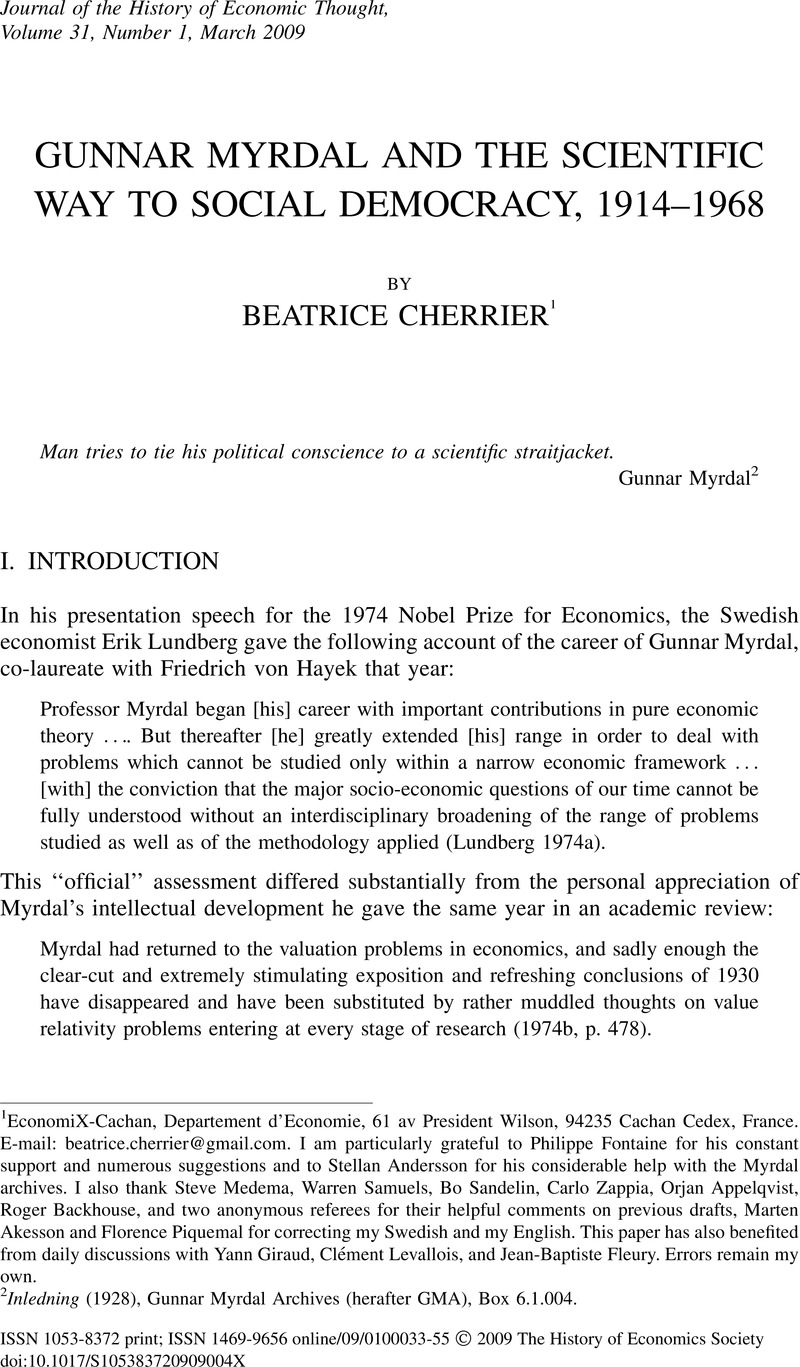Crossref Citations
This article has been cited by the following publications. This list is generated based on data provided by Crossref.
Backhouse, Roger E.
and
Klaes, Matthias
2009.
Applying economics, using evidence.
Journal of Economic Methodology,
Vol. 16,
Issue. 2,
p.
139.
Pluta, Joseph E.
2009.
Evolutionary Alternatives to Equilibrium Economics: A Suggested Research Agenda.
SSRN Electronic Journal,
Pluta, Joseph E.
2010.
Evolutionary Alternatives to Equilibrium Economics.
The American Journal of Economics and Sociology,
Vol. 69,
Issue. 4,
p.
1155.
Lucassen, Leo
2010.
A Brave New World: The Left, Social Engineering, and Eugenics in Twentieth-Century Europe.
International Review of Social History,
Vol. 55,
Issue. 2,
p.
265.
Forges Davanzati, Guglielmo
2013.
Gunnar Myrdal on Labour Market Regulation and Economic Development.
OEconomia,
Vol. 2013,
Issue. 01,
p.
3.
Forges Davanzati, Guglielmo
2013.
Gunnar Myrdal on Labour Market Regulation and Economic Development.
OEconomia,
p.
3.
Kragh, Martin
2014.
The ‘Wigforss Connection’: the Stockholm School vs. Keynes debate revisited.
The European Journal of the History of Economic Thought,
Vol. 21,
Issue. 4,
p.
635.
Barbaroux, Nicolas
and
Bellet, Michel
2017.
L’économie comme science et les jugements de valeur politiques.
Revue économique,
Vol. Vol. 68,
Issue. 2,
p.
219.
Chassonnery-Zaïgouche, Cléo
and
Larrouy, Lauren
2017.
“From warfare to welfare”: Contextualising Arrow and Schelling's models of racial inequalities (1968–1972).
The European Journal of the History of Economic Thought,
Vol. 24,
Issue. 6,
p.
1355.
Rogowska, Beata
2021.
Potyczki metodologiczne Gunnara Myrdala.
Optimum. Economic Studies,
p.
91.
Johnson, Marianne
2024.
Swedish intellectual thought on inequality and a ‘welfare world’.
Global Intellectual History,
Vol. 9,
Issue. 1-2,
p.
81.
Gutema, Tesfaye Worku
Wedajo, Alemu Geleta
and
Koya, Purnachandra Rao
2024.
A mathematical analysis of the corruption dynamics model with optimal control strategy.
Frontiers in Applied Mathematics and Statistics,
Vol. 10,
Issue. ,
Chassonnery-Zaïgouche, Cléo
and
Goutsmedt, Aurélien
2024.
Modelling intervention: Barbara Bergmann’s micro-to-macro simulation projects.
The European Journal of the History of Economic Thought,
p.
1.
Johnson, Karl E.
2024.
Rediscovering the Developmentalist-Productive Roots of Welfare State Policies.
Social Development Issues,
Vol. 46,
Issue. 2,
Berg, Claes
2025.
Gunnar Myrdal.
p.
191.
Bochenek, Mirosław
Giza, Wojciech
Rogowska, Beata
and
Zagóra-Jonszta, Urszula
2025.
Wokół problemów z pieniądzem w ujęciu historycznym.
Berg, Claes
2025.
Gunnar Myrdal.
p.
87.
Ahmed, Mostak
Kamal, Mostofa
and
Hossain, M. Alamgir
2025.
A mathematical model of corruption dynamics and optimal control.
Franklin Open,
Vol. 10,
Issue. ,
p.
100216.



